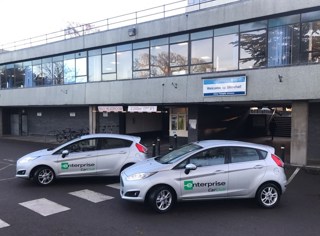Andrew Ryan looks at how an organisation might set about developing successful approaches to grey fleet management in six simple steps.
Allowing employees to drive their private cars on business can have consequences for an organisation.
The British Vehicle Rental and Leasing Association (BVRLA) Getting to Grips With Grey Fleet report found that employees travel 12 billion miles a year in 14 million grey fleet vehicles, costing employers around £5.5 billion.
It also has duty of care implications, as the vehicles used by grey fleet drivers are often not as new or well maintained as company vehicles.
“Organisations should take a proactive approach to road safety for moral, financial, environmental and legal reasons, but many employers apply less stringent regulations to grey fleet vehicles, failing to manage the safety of these vehicles or the safety standards of their drivers,” says road safety charity Brake, which has produced a Managing the Grey Fleet guide.
However, costs and risks can be controlled and reduced by implementing a grey fleet policy, covering drivers and vehicles, as well as providing staff with alternatives for business travel.

The first step towards developing a grey fleet policy should be to establish how and why employees use their own cars for business.
Sometimes it may simply be for convenience, or it could be that the employee doesn’t know any better, says Chris Endacott, owner of sustainable travel consultancy Gfleet.
“Getting quality data is a critical first step. You are not going to be able to control the grey fleet until you understand what the journeys are, so you cannot then put alternatives in place,” he says.
“Robust data gathering is vital and one of the key steps towards confirming grey fleet mileage is to have a mileage claims system that records every trip.”
Journey patterns and mileage can also be collected automatically by using telematics or a mobile phone app.
“Often when we do a grey fleet analysis, the kind of reports we see are ‘Joe Bloggs, April-May, 237 miles’,” says Endacott.
“You are left thinking ‘was that a very long single trip, or 10 trips of 20 miles, or 100 trips of two miles?’. You have no idea.
“There is no information there that enables you to ask ‘what are you making these trips for?’.”

Once the type and length of journeys have been determined, an organisation can then put in place appropriate alternative measures, such as pool cars, car clubs or daily rental vehicles.
Brake recommends that employees should avoid unnecessary travel and, instead, transfer essential travel to more sustainable modes of transport other than driving, such as public transport, walking or cycling.
“Managers should consider applications to work at home, and encourage use of video- or audio-conferencing, telephone or email instead of travelling for meetings,” it adds.
“All travel should be approved in advance by the appropriate manager, who will check whether travel by grey fleet is the best option or not.
“It is important that staff are made aware of alternative transport schemes such as cycle-to-work initiatives and car clubs, and can access them wherever possible.”
Sussex Community NHS Foundation Trust launched a travel bureau in 2012 which is essentially “a one-stop shop for staff and managers to review their travel”, says Jim Thomas, head of logistics at the organisation.
Employees are able to contact the bureau by phone or email, where they will be given access to a range of initiatives, such as a pool car fleet of 28 low-emission vehicles spread throughout the organisation’s 65 sites, information on and booking of public transport and route planning.
“It’s working really well for us,” says Thomas.
The initiative has helped the trust reduce its grey fleet mileage from six million miles to around 4.2m – a fall of 30%.
Norfolk Community Health and Care NHS Trust (NCH&C) operates a travel hierarchy which is based on travel requirements and puts grey fleet as a last resort while promoting pool bikes, pool/hire cars and public transport.

Employee-owned vehicles are often much older than company cars, which means they may lack modern safety equipment as well as being less fuel efficient. The BVRLA found that the average age of a grey fleet vehicle is 8.2 years.
However, for those occasions when a grey fleet vehicle has to be utilised, a robust policy should clearly set out what can be used.
“A grey fleet policy should outline the minimum vehicle standards that employee-owned cars must meet for the following: minimum Euro NCAP safety ratings, vehicle age, emission levels, required safety features and essential breakdown cover,” says Brake.
Freedom Group, for example, has set a five-year age limit on its cash allowance cars, compared to the four-year cycle employed on company cars.
The additional year helps employees offset extra costs such as insurance, says head of group fleet Paul Brown.
The policy should also state that the employee is responsible for ensuring their vehicle complies with laws on roadworthiness, is being serviced in line with manufacturer guidelines and has the appropriate level of insurance and breakdown assistance cover, and that the employer will require paperwork to prove this, says Brake.
It can also outline the need for drivers to check fuel, lights, oil, rust, water, electrics, indicators, windscreen (including wipers), mirrors and tyres at the start of each journey.

Drivers should receive the same scrutiny as employees with company-owned vehicles, says Brake.
“Each driver should provide evidence of a valid and clean driving licence, as well as details of insurance and breakdown assistance cover,” it adds.
“Each driver should be properly inducted into the fleet safety policies and practices of the organisation, and their risk level assessed and managed.
“Their incident record should be stored alongside information about the vehicle they drive, so that trends can be spotted and rectified as they occur.
“Employers should remember that anything they do for staff using company-owned or leased vehicles must be done for grey fleet drivers, for example, practical driving tests, eyesight tests, vehicle check walk-throughs and an explanation of how to report vehicle defects and crash procedures.”
Documents should be checked regularly, with the frequency tailored to an individual’s circumstances.
For example, Speedy Services carries out driver licence checks on a weekly, monthly, three-monthly or six-monthly basis dependent on the number of points they have and their risk profile.

Once the grey fleet policy has been formulated, Brake recommends it should be communicated to employees at all levels.
NCH&C, in partnership with its fleet management partner GMP Drivercare, holds regular ‘Travelling in the Right Direction’ roadshows to inform staff of existing practices and promote new facilities and technologies which help reduce and manage risk, cost, carbon and the incorrect application of the expenses policy.

Speedy Services stores all grey fleet driver and vehicle documents on its fleet management software system, which allows it to easily identify employees whose documents are out of date or are about to expire.
“Before this we used an Excel document, split between transport and HR, so it was never really fully up to date and you couldn’t edit it if someone else was in it,” says Mark Woodworth, head of transport and logistics at Speedy Services.
“It was an admin nightmare so to move to a system that everyone can view or edit at the same time was brilliant.”
The software system prompts the driver and transport team if documents are about to expire.
“HR then tries to contact them through their line manager and if we still don’t get the documents, we cancel their cash allowance, although we haven’t had to cancel any yet,” says Woodworth.
“We are a very safe business and we pride ourselves on that, so we need to go out there and be safe.
“If we can’t be safe, then our employees can’t have the benefit of the cash allowance.”
Some organisations are set up so the fleet team is responsible for triggering mileage expenses authorisation. This means that they can withhold payment until all relevant documents are up to date






















Login to comment
Comments
No comments have been made yet.